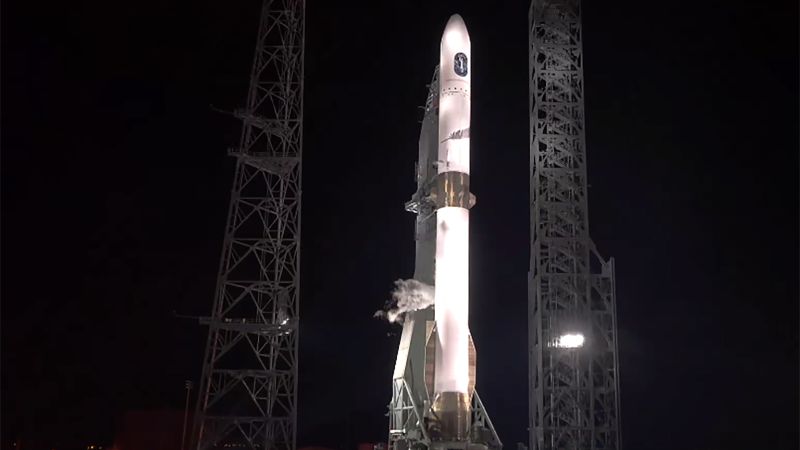**Blue Origin Delays New Glenn Rocket Launch: An Overview**
Blue Origin, the space exploration company established by Jeff Bezos in 2000, faced a setback on its journey to successfully launch its new 30-story rocket, the New Glenn. The company called off its initial attempt early on Monday morning, citing an undisclosed technical issue that needed to be addressed. This unforeseen circumstance highlights the inherent challenges in space exploration and rocket development, especially during a crucial inaugural launch.
As the day progressed, Blue Origin offered little in the way of updates regarding the specific issue at hand. Approximately 14 hours after the initial delay, the company announced through social media that it would make a second attempt within a three-hour launch window set to open at 1 a.m. ET on Tuesday. The anticipation surrounding the New Glenn rocket was palpable, as Blue Origin prepared for liftoff from Launch Complex 36 (LC-36) at Cape Canaveral Space Force Station in Florida. However, the company tempered expectations by noting that unfavorable weather conditions overnight could further delay or even cancel this next launch attempt.
In a post on X, the social media platform formerly known as Twitter, Blue Origin cautioned: “Tonight’s poor weather forecast at LC-36 could result in missing this window.” This statement served to remind the public of the unpredictable nature of space launches, where multiple factors—both technical and environmental—can impact the feasibility of liftoff.
Later in the day, Blue Origin provided more clarity regarding the issue that had led to the scrubbed launch attempt. They disclosed that the initial delay was due to ice formation in a purge line linked to an auxiliary power unit responsible for powering several of the rocket’s hydraulic systems. This technical explanation laid the groundwork for a better understanding of the complexities involved in rocket engineering. A purge line is critical for maintaining the integrity of rocket systems, as it helps expel unwanted gases or debris that may interfere with smooth operations.
This detailed disclosure contrasted sharply with the initial vague reports from the company’s webcast earlier that day. During the live stream, Blue Origin had only mentioned that engineers were troubleshooting “anomalies”—a broad term used in aerospace engineering to denote problems that require resolution before a launch can proceed. Ariane Cornell, Blue Origin’s vice president of in-space systems, commented on the situation, stating, “We are standing down from today’s launch attempt to troubleshoot a vehicle subsystem issue.”
The urgency of the situation was evident as the countdown clock approached the ten-minute mark before liftoff. Occasional time extensions were granted as the engineering team sought solutions. However, as time slipped away, it became clear that the issues could not be resolved quickly, leading to the decision to halt the launch attempt just before the launch window closed at 4 a.m. ET.
The smooth launch of New Glenn is seen as critical not only for Blue Origin but also for its aspirations to make a significant impact in the competitive space launch industry. As the first rocket designed by Blue Origin capable of delivering satellites to orbit, New Glenn’s performance is pivotal for the company’s credibility in an industry long dominated by SpaceX.
In the coming week, as Blue Origin works to iron out the kinks with the New Glenn rocket, the company also faces stiff competition. For instance, a SpaceX Falcon 9 rocket is scheduled for launch carrying two lunar landers from NASA’s Kennedy Space Center, which is located adjacent to Cape Canaveral in a busy landscape defined by rapid advancements in space exploration. Furthermore, SpaceX is set to conduct the seventh test flight of its Starship, another ambitious project aimed at interplanetary travel.
In summary, while the initial launch attempt of the New Glenn rocket faced challenges, the experience underscores the intricacies and uncertainties involved in modern-day rocketry. Given the competitive landscape, successful navigation of these obstacles will be crucial for Blue Origin as it seeks to establish its position in the evolving narrative of space exploration.











